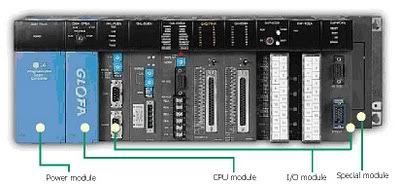
PLC is widely used in industrial applications, eg in the process of packing, material handling, automated assembly and so forth. In other words, almost all applications that require electrical or electronic control requires PLC.
In other words, the more complex process that must be addressed, the more important the use of PLC to facilitate these processes (and also replace some conventional equipment). Besides the conventional process control systems have some disadvantages compared with the PLC, among others:
- Need to work hard when I do the wiring.
- Difficulties when do the replacement and / or changes.
- The difficulty now is tracking error.
- When there are problems, take a long time.
While the use of the PLC controller has several advantages compared with conventional control systems, among others:
- Compared with the conventional process control systems, the number of cables required can be reduced by 80%.
- PLC lower energy consumption compared with conventional process control system (based relays / contactors).
- Diagnostic functions in a PLC controller allows the detection of errors that easily and quickly.
- Changes to the operational sequence or a process or application can be done easily, simply by changing or replacing the program, either through console or computer terminal PC.
- Does not require a lot of spare parts.
- It's cheaper than conventional systems, particularly in the case of the use of the instrument I / O is quite a lot and operational functions of the process is quite complex.
- Resilience PLC is much better than the auto-mechanical relays.




